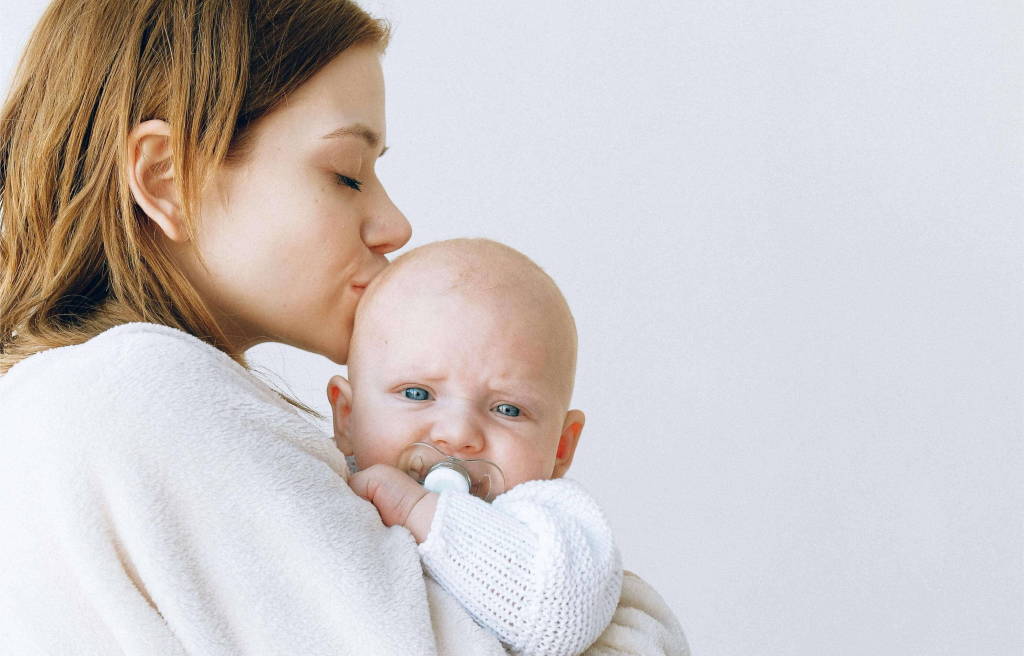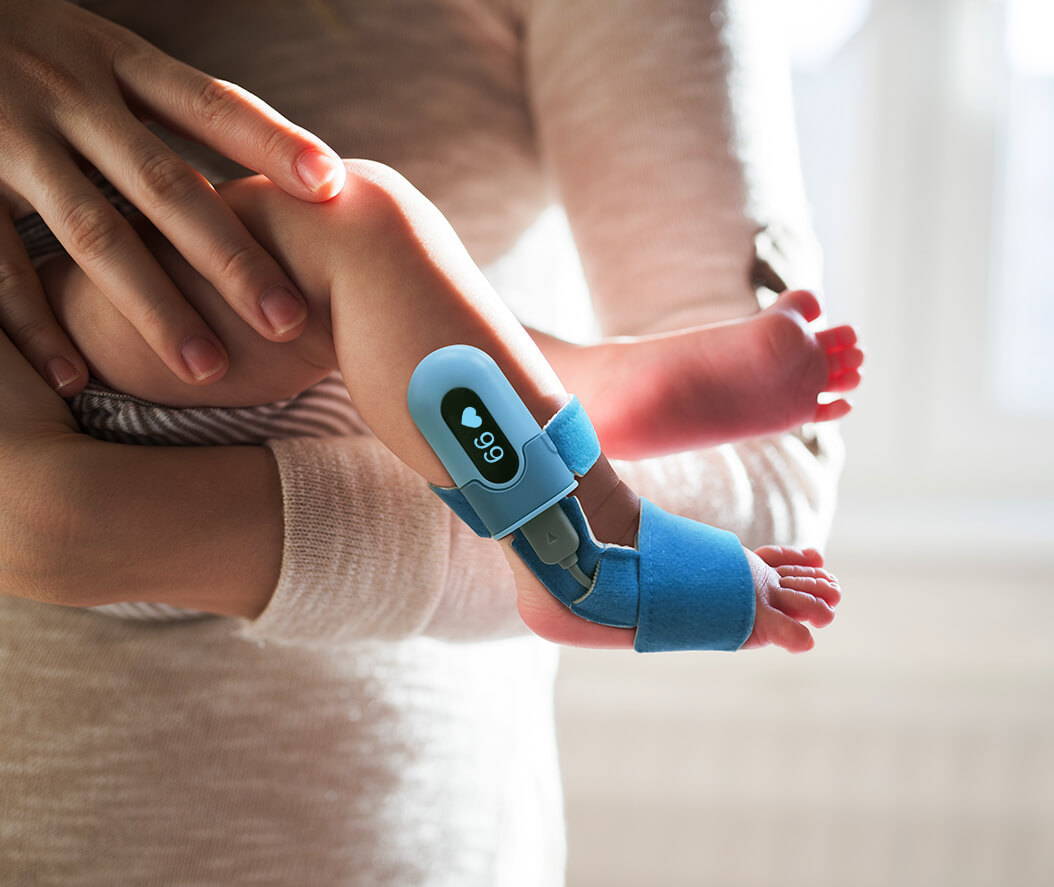It must not come as a surprise to say oxygen plays a critical role in any human being. But just a mere presence of oxygen alone is not enough, especially when it comes to babies, the levels of oxygen really matter. The good development of their young bodies depends on having the right amount of oxygen in their blood.
High levels of blood oxygen can be just as problematic in babies as low oxygen levels. That might sound contrary to the conventional wisdom of more is better, but a human body is more complex. A lot of babies get hospitalized with problems related to blood oxygen levels, and they can either be high or low.
For parents of little babies, it is important to know if your baby's oxygen levels are optimal to avoid having to rush them to the Emergency Room. This is why there is an uptick in baby monitors, not only to monitor baby sleep quality but to check their high and low oxygen levels. Let us look at some of the things you have to know and what you can take on your baby's blood oxygen levels.
1. Causes of changes in blood oxygen levels in babies
Oxygen is carried around a baby's body to various organs by a protein in the red blood cells called hemoglobin. `The measure of how much hemoglobin is bound with oxygen compared to unbound hemoglobin is known as oxygen saturation.
High saturation levels of oxygen can be harmful to the body, leading to a condition known as oxygen toxicity. A low concentration of oxygen is also harmful to a baby's body, leading to a condition called hypoxemia. Both of these conditions are not good for the organ tissues of a baby.
Let us look at some of the causes of these conditions.
What causes high blood oxygen levels in babies?
Oxygen toxicity is common in babies who are being provided oxygen artificially to curb an underlying deficiency in their blood oxygen levels. Here are two scenarios that can cause oxygen toxicity.
● Hyperbaric oxygen therapy
Hyperbaric oxygen therapy is the treatment of babies with 100% oxygen at a higher pressure than the surrounding atmospheric pressures. This may result in high blood oxygen level tension and tissue oxygen tensions leading to oxidative stress in babies. This condition is called hyperoxia.
● Breathing ventilators
Ventilators, also known as breathing machines, are given to babies whose lungs cannot perform well in supplying the body with enough oxygen, to artificially deliver increased oxygen and breathe for the baby.
Too much oxygen can cause injury to the lungs by physical damage, and for babies born prematurely and with heart problems, too much blood oxygen concentration can lead o brain and eye damage.
What causes low blood oxygen levels in babies?
Low oxygen levels in babies are of a more common problem than high oxygen. Causes of low oxygen in babies can be:
● Premature birth
Babies born before 37 weeks gestation are more likely to experience a condition in which the lungs are not fully developed and don't work properly. This condition is called Respiratory Distress Syndrome and can cause difficulty breathing and low oxygen levels.
● Respiratory infection
Infections in the respiratory system of the babies are also another potential cause of low oxygen in babies. If the motherhas an infection that is passed on to the baby or the baby develops a respiratory problem due to disease-causing agents, it can cause respiratory distress which in turn leads to low oxygen levels.
● Congenital heart defects
Congenital heart defects are a range of birth defects that affect the normal functions of the heart in babies. These defects can cause problems with the way blood flows through the heart, which can lead to oxygen deprivation in the organ tissues.
2. Symptoms of high and low blood oxygen levels in babies
Symptoms of low or high oxygen levels in babies will depend on the severity of the condition. It is therefore important to be able to detect these signs and symptoms early on before the situation gets out of hand. Here are some of the symptoms to keep an eye for:
● Skin color turns bluish-purple
This condition is medically known as cyanosis. It is one of the most common symptoms of low oxygen levels in babies which gives their skin a bluish tint. This happens when the blood oxygen level drops and the blood vessels constrict to increase oxygenation.
● Intermittent breathing
These are characterized by pauses in the baby's breathing pattern of at least 20 seconds or longer. This is a common symptom of low oxygen levels in babies. It is medically known as apnea and can be caused by respiratory distress.
● Low heartbeat rates
The heart is responsible for distributing oxygenated blood to all organ tissue. A low heartbeat rate will lead to low oxygen levels across the baby's body. This condition is called bradycardia. It is another symptom of low oxygen levels characterized by a heart rate that's less than 60 beats per minute.
● Seizures
Not all seizures are a sign of epilepsy. Some seizures can be a symptom of low oxygen levels in a baby. Low oxygen levels in the brain tissue can lead to a sudden, and uncontrolled electrical disturbance in the brain of a baby.
● Tiredness
Low oxygen in babies can also make them look tired and show signs of a lack of energy. This condition is called lethargy. It can be caused by a wide range of reasons oxygen deprivation is one of the most common ones.
3. What is the normal value of oxygen in babies and how to measure it?
It is always important to make sure that babies are getting the right amount of oxygen at all times to ensure the good development of their young bodies. The normal level of oxygen saturation in babies is between 95% to 100% during normal breathing.
It is important that the level of a baby's oxygen is constantly checked, especially if they have underlying health defects. Here are ways of measuring oxygen levels in babies
● Pulse Oximetry
This is a test done with a sensor to measure the oxygen saturation level in the body. It is a painless procedure and can be done at home. Most baby sleep monitors come equipped with a pulse oximeter to give you accurate measures at all times the baby is asleep.
● Arterial Blood Gas Test
This is a test that can only be performed by a trained physician or nurse at the hospital. It involves collecting a blood sample from the baby's artery to measure the levels of oxygen and carbon dioxide in the blood.
4. What can you do about the changing oxygen levels in your baby?
The best start to finding a solution to a problem is identifying the problem itself. For parents of babies, this means constant monitoring of the baby when they are awake playing, and even when they are in their crib sleeping.
There are tools that one can use to monitor a baby when they are asleep. One best way of doing this is using a baby sleep monitor. These come with cameras, motion detectors, and a pulse oximeter. The baby monitor I then connected to an application on your phone, so you can see the baby's wellbeing even when you are in a separate room.
If you notice the signs of changing oxygen levels in babies, it is important to check if they are able to breathe properly and if nothing is blocking the air passage, check if the surrounding air quality is good, and sometimes it boils down to their sleep position.
If none of those steps seem to help, it is advisable to quickly call a doctor for immediate assistance.








Leave a comment